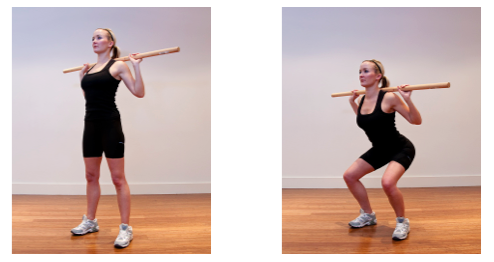I have been writing quite a bit about corrective exercise of late. This blog entry is about an important exercise of corrective exercise called isolation to integration. It explains more clearly through example the need for corrective exercise, how I use it and progress through exercises to get clients back to fully functional movement. Read on for a geek out and an inside look into the working mind of KT!....
Isolation
When I first begin working with a client who has poor posture and or pain/injury I often, although not always, break movement right down into pieces. There are a number of reasons why I do this.
1. Ready, aim....
The first is often certain muscles will not be firing enough or at all and in complex movements like the squat or a pushup other muscles will have taken the job of the lazy muscles which has caused an imbalance in posture. In order to get the lazy muscles firing we isolate them so the other now stronger and 'preferred' muscles are less involved.
2. Brain training
This leads to the second point of isolation, when you create poor patterns where lazy muscles stop working and others take over this creates new movement blueprints that are stored in the brain. The more you repeat the movement pattern the stronger the blueprint in the brain becomes. Eventually, this faulty blueprint programme will run automatically. To override it, we need to break the pattern down and build it back up again. We often need to start by training the muscles in isolation to achieve this.
3. Easing into it
This brings me neatly onto the third point; because your faulty movement blueprint is so strong, it takes conscious brain power and focussed concentration to retrain the muscles and movements for a new preferred blueprint. Isolated movements help the brain to adapt more easily and also help you to make progressive change that will minimise frustration.
Integration
Is it needed?
After all that praise for isolation I am sure you must be thinking there is no place for integration in rehabilitation and corrective exercise. Not true at all! Integration is the ultimate goal here and I am keen to get you to integrated functional movement for life and sports safely and effectively as soon as possible.
Integration means using the isolated retrained muscles with other muscles in bigger more challenging complex movements. This does not mean however, that you jump into what you have been doing before. You'll need to go through certain progressive stages to successfully achieve higher quality complex movement function. Some people I work with go through this very quickly, others take longer. It depends on how body aware you are, how quickly your brain and body adapt and how diligent you are with the exercises you are given.
Progression is an essential part of successful rehabilitation and corrective exercise. Particularly with injuries and those with chronic pain, muscle tissue needs time to adapt and change. If you push too hard to fast you'll end up injuring yourself further and it will take longer to rehabilitate and correct posture.
An Example
A classic example that I work with is a weakness in lateral and rotational hip stabilisers in a squat pattern. This is a very simple explanation of a common and easy to fix problem, and is often combined with many other imbalances. For this examples we'll keep it simple. Please do not attempt these exercises without supervision from an exercise professional.
A very isolated exercise is the side lying wall angel. This isolates the muscles that rotate the leg out and move the leg sideways.
I may then move to integrating that with a hip extension by placing a band around the knees to work the muscles that rotate the leg out and move it sideways as well as the muscles that left the hips up (glutes and hamstrings). From there I might add more load and range by upgrading it to a swiss ball hip extension with the band.
This may lead to a squat pattern again with the band around the knees getting to a more functional pattern of movement.
Screen Shot 2014-05-01 at 11.54.13
In each stage above there are mini phases of development and some individuals may start at a higher level than wall angels.
The point is these stages allow for retraining of the brain and the body for better movement patterns and alignment which help the healing and recovery of injury and pain, improve function and efficiency of movement, as well as reduce the risk of future injuries.
I do hope this explanation of one of many of the concepts we use in corrective exercise helps you to understand how we can help you recover from pain and injury better. If you have any questions or comment please
.




